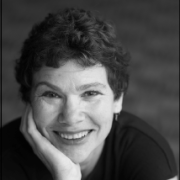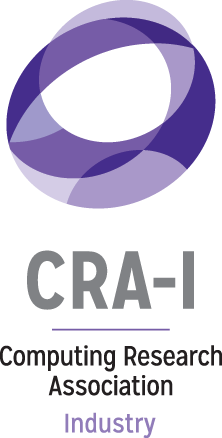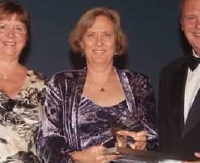Interview with Fran Berman
Originally Printed in the Summer/Fall 2009 Newsletter
 Fran Berman has recently been ap-pointed the Vice President for Re-search at Rensselaer Polytechnic Institute (RPI). Prior to this post, she served as the director of the San Diego Super-computer Center and High Performance Computing Endowed Chair at the University of California, San Diego (UCSD). Fran earned her master’s and doctorate in mathematics from the University of Washington and began her teaching career at Purdue University in 1979. She has had an amazing career of research and service to the computing research community, including serving as co-chair of CRA-W from 1994-1997.
Fran Berman has recently been ap-pointed the Vice President for Re-search at Rensselaer Polytechnic Institute (RPI). Prior to this post, she served as the director of the San Diego Super-computer Center and High Performance Computing Endowed Chair at the University of California, San Diego (UCSD). Fran earned her master’s and doctorate in mathematics from the University of Washington and began her teaching career at Purdue University in 1979. She has had an amazing career of research and service to the computing research community, including serving as co-chair of CRA-W from 1994-1997.
Q. You just moved to become VP for Research at RPI. Tell us about the opportunities you will be pursuing in your exciting new job. What attracted you to this new position?
At the time of this writing, I’ve been on the job a month and am having a great time. There is much to learn and I’m energized by the opportunity to take on new challenges in a new landscape. The Vice President for Research position at RPI provides me an opportunity to develop the entire research ecosystem, with the goals of achieving greater impact and funding success for RPI’s faculty, students, and research staff. The opportunity to really make a difference at this scale drew me and it was a good time in my career to consider this kind of a change. RPI has a very dynamic president, Dr. Shirley Ann Jackson, and the opportunity to work with, and learn from, her was a tremendous attractor.
Q. You are leaving your previous role as Director of the San Diego Supercomputer Center. What did that job entail?
I greatly enjoyed my nine years at SDSC and the staff was wonderful. The Director of SDSC position combines both CEO and CTO functions, and I was responsible for creating and implementing a vision for the organization. At SDSC, we always focused on providing the kind of cyber-infrastructure that extends the reach of the research and education community beyond their local labs and departments. This meant that SDSC resources and expertise expanded from a focus on supercomputers in the 1980’s to include data cyberinfrastructure, grid and cloud computing, software tools, and interdisciplinary expertise in 2009. Being Director was a bit like being mayor of a small village. The SDSC staff form a close community and we went through a lot together, from natural disasters like the San Diego fires, to challenges such as changing our fundamental business model and streamlining the organization.
Q. Looking back at your years at SDSC, what accomplishments there are you most proud of?
I am proud of many accomplishments at SDSC but the most challenging and satisfying to me was the successful re-conceptualization of SDSC when the NSF PACI/CORE program terminated. At that point, we needed to rethink SDSC’s vision, business model, and organization from the ground up and to integrate the center much more closely with UCSD and the UC system. All of that, while continuing to provide excellent service, and pursue new growth opportunities! It required a tremendous amount of leadership, perseverance, hard work, and reaching out to staff all over the center and colleagues within UCSD and UC. It also took a village. I am tremendously proud of what we did during this time and the resulting health, stability, and impact of SDSC today.
Q. Along with being Director of SDSC, you were a faculty member, holding the High Performance Computing Endowed Chair in the Computer Science and Engineering Department at UCSD. Tell us a bit about your research.
My research interests have evolved a lot over time. I started out in computer science theory and moved into parallel processing, then heterogeneous computing, then grid computing, and now data cyberinfrastructure. During the ‘90’s, I founded the Grid Computing Labo-ratory at UCSD. I was fortunate that the Lab attracted an outstanding group of students, postdocs, and visitors, and we investigated problems associated with promoting the performance of individual applications on the Grid through self-optimizing behavior. This was some of the first work that dealt with the adaptive performance aspects of Grid Computing, and it is gratifying to see these ideas re-emerging today as an important approach for modern dis-tributed and cloud environments.
My current work focuses on digital preservation and access, and data cyberinfrastructure. In the Information Age, digital information is everywhere – from YouTube videos to e-Government records – and we generally assume that digital information will be available when we need it. Ensuring that this is the case involves technical problems (e.g. migrating information from one generation of storage media and systems to the next without data loss), development of appropriate policies (e.g. who owns digital information and who can access it), and implementation of sustainable economic models (e.g. who pays for the support of digital information over time). I’m very involved in a variety of efforts promoting the preservation and access of the digital data, and raising awareness among decision makers and communities with respect to the cyberinfrastructure needed for its support.
Q. What drives you at this point in your career?
Like a lot of people in my generation, I feel strongly that it’s our responsibility to leave the world in better shape than we found it. This is especially important when you think about what our leaders in the next decade or two will inherit, most of whom are in their 20’s today, like my kids and their friends. I find their generation inspiring. They are smart, savvy, passionate, thoughtful, technology natives, and are just starting to deal with substantive real-world challenges. I believe that we can evolve today’s universities to better provide the next generations experience in addressing the challenges of a complex world for which there is no answer key. We can give them safe places to try things and fail, and we can help prepare them for real-life problems. I’d like to help universities, and particularly RPI, be this kind of critical venue for growth. At this point in my life, I have the luxury of doing things that I think are really important, and to me, giving something back to the next generation is really important.
Q. You were one of the founders of CRA-W. What programs were you involved in while you were part of CRA-W?
I was one of the original members of CRA-W and at one point, I was one of the co-Chairs with Janie Irwin. One of my first responsibilities in CRA-W was to be the editor of the “Expanding the Pipeline” column in Computing Research News. I was also General Chair of one of the Careers workshops and participated in many others.
It was really a privilege. For more than a decade, CRA-W has attracted a stellar group of senior women leaders who have had ambitious goals for an outstanding and diverse professional community. They’ve committed a great deal of time and effort to mentor, promote, and retain women in computer science and engineering. It’s paid off. Over the years, we have made a real difference for women in computer science and engineering. I’ve had women email me who went through the job or tenure workshops, and tell me that the information, role modeling, and networking provided by CRA-W had real impact on their careers.
Q. What challenges have you faced as a woman leader in our field?
One of the biggest challenges is something I think of as professional cross-culturalism, where the “cultures” manifest themselves as the gender-oriented expectations and training we bring with us to the professional arena. Many women, including myself, have comparatively non-traditional approaches to leadership, communication, team-building, etc. To be effective, you need to know when to push the boundaries and when to respect them. Particularly when you come from a different place, you need to know how to be effective or it’s very hard to succeed. The process of navigating these “cross-cultural” notions of leadership, credibility, effectiveness, success, etc. is one of the challenges that I think many women deal with in the workplace.
I also think that women in professional life need to de-velop a tough skin. Higher level positions and more resources usually mean more professional politics and higher stakes. Things can get very tough. It’s important to not take what happens personally, and to stay focused on what you want to accomplish. At the end of the day, it’s important to feel OK about your life and your be-havior, and it helps tremendously to have some grounding and perspective.
Q. What do you do to balance work and family life?
Well, in our house, balance definitely doesn’t mean that everything is tidy or even in working order, but we always take time for each other. Our family has a lot of fun and we really enjoy being with each other. You just can’t do everything perfectly, so you pick what you want to spend time on. I’ve always focused on our family and my work, both of which I care passionately about. I’m really enjoying my kids as adults. My 23 year old daugh-ter is a choreographer and lives in Chicago and my 21 year old son is finishing his undergrad degree in Math and Phys-ics and will likely go on to Math grad school. Both my kids are thoughtful, creative, interesting, fun and really in touch with the world. My husband is my best friend, and when the kids were growing up, we both partnered fully as par-ents, which made a tremendous difference in my ability to grow both personally and professionally. I’ve really loved having big leadership opportunities and responsibilities, but I’ve always thought that on the day you leave your high-profile job, you need to have a satisfying real life to go back to. Keeping that in mind keeps you focused on what’s really important.





